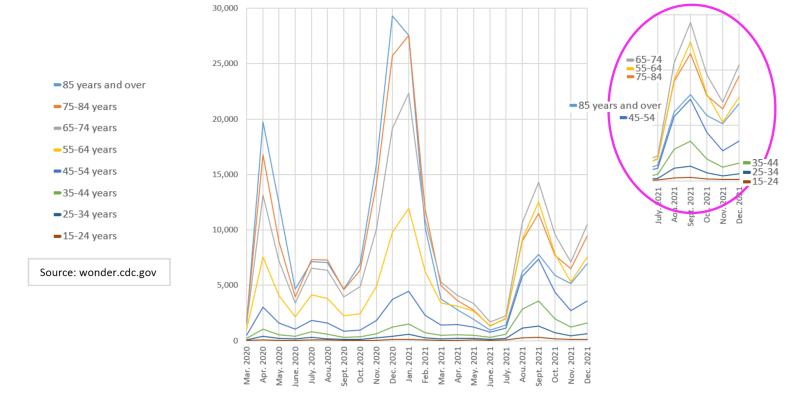Martin Kulldorff recently wrote the following:
For the mRNA vaccines, the big question that needs an urgent answer is whether they cause an increased risk of heart attack and/or other serious heart problems. There are many anecdotal reports, especially among young male athletes, and many VAERS reports.He further writes:
Public health officials face a temptation to summarily dismiss anecdotal vaccine injury stories and people concerned about the publicly available VAERS reports, but in public health, we cannot do that. We must take people’s concerns seriously.What’s an economist’s reaction to anecdotal evidence? A friend recently asked me about the statistical relevance of anecdotal evidence. My answer to him was the following. The sum of life experiences by the many leads to a picture of the whole, while a picture of the whole hides unique and varied life experiences.
No “anecdotal evidence” should be dismissed a priori, just because it has been observed over a small and/or unique sample. The questions are the same, whether about “anecdotal evidence” or “evidence over a larger sample or population”: Have we really observed a change in the pattern in our data? What kind of inferences, if any, can we make from our observations?
To my surprise, deaths due to suicides do not show an increase in 2020-21. But we thought they did, didn’t we? Does this mean we were not paying attention to suicides before, but recent events made us more attune to the suffering of others? Or does it mean deaths of despair are found in other cause of death categories? Deaths due to accidental poisoning and exposure to noxious substances (which include accidental drug and alcohol overdose) have increased. Deaths due to homicide, and deaths due to liver diseases, have too.
Some thought April 2020 deaths were too high and justified putting our lives on hold, but January 2021 numbers were worse—the percentage death rate in 2021 is the same as it was in 2020. Why the increase in January 2021 deaths? Continued upward trend in deaths due to the increase and aging of the US population? Deaths of despair? Increased deaths due to untreated conditions in 2020? Deaths due to COVID or one of its variants? Vaccine deaths?

Vaccine deaths? The January 2021 peak, which is higher than the April 2020 one, is dominated by deaths from 65 years and older age groups. The September 2021 peak is dominated by 64 years and younger age groups.
But don’t those peaks also correspond to the COVID-19 ones? That’s correct.
But, while the April 2020 and January 2021 COVID-19 deaths peaks show the usual age distribution, with deaths experienced in greater numbers for older age groups, the September 2021 does not. In September 2021, recorded COVID-19 deaths show 65-74 years old died in greater numbers than 75 years and older, and COVID-19 deaths for the 45-54 years old were as high as for the 85 years and older.
My motivation has always been to minimize the suffering. Even if COVID-19 had been alarming, panic certainly wouldn’t help. Even if the vaccines were harmless, denying individuals the ability to opt out, doesn’t help the ones who willingly opt for it. Am I afraid to admit COVID vaccines have caused deaths? Are you?



